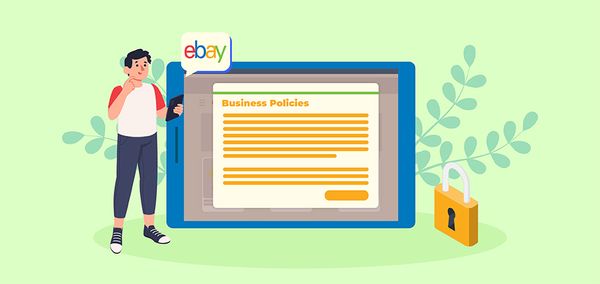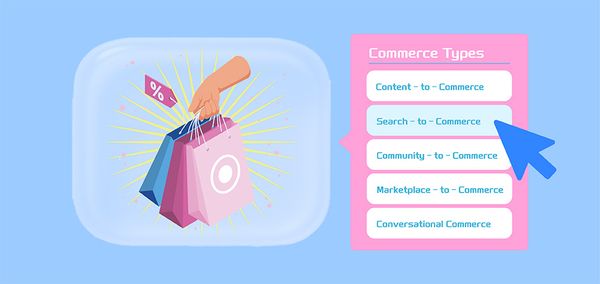How to Sell Digital Products: A Beginner's Guide in 2025

The potential to sell digital products has never been more promising in 2024. Whether you're an aspiring entrepreneur, a creative professional, or a subject matter expert, the ability to offer intangible goods and services online has become an increasingly attractive and lucrative avenue for building a successful business.
This comprehensive guide will delve into the world of digital products, exploring the numerous advantages they offer, and providing a step-by-step roadmap to help you navigate the process of creating, marketing, and selling your own digital wares.
What Are Digital Products
Digital products are intangible goods or services that are delivered electronically to customers. These can range from downloadable files, such as e-books, music, or software, to web-based offerings like online courses, membership subscriptions, and digital tools.
Unlike physical products, digital products can be easily replicated, stored, and distributed, making them a highly scalable and cost-effective option for entrepreneurs and businesses of all sizes.
Why Sell Digital Products
The appeal of selling digital products lies in their numerous advantages over traditional physical goods. Digital products require no inventory management, shipping, or warehousing, significantly reducing overhead costs.

|
Pre-set the Best Shipping Methods DSers Shipping Settings - Pre-select your favorite shipping method to save money and time |
They can be sold and delivered instantly, providing customers with immediate access and gratification. Additionally, digital products can be easily updated, modified, or expanded to meet the evolving needs of your customers, fostering ongoing engagement and revenue streams.
How to Sell Digital Products
Now, let’s check the steps to sell digital products.
Brainstorm a Product
The first step is to identify what you can offer. Start by examining your skills, interests, and areas of expertise. What types of digital content or services could you create that would provide value to your target audience? Consider your unique experiences, hobbies, and passions, as they can serve as the foundation for your digital product ideas.
During the brainstorming process, it's essential to keep an open mind and explore a wide range of possibilities. Don't limit yourself to just one or two ideas; instead, generate a list of potential digital products that align with your strengths and the needs of your market. This could include anything from e-books and online courses to digital templates, software tools, and multimedia content.
Do Market Research
Once you have a list of potential digital products, it's time to dive into market research. This crucial step will help you validate your ideas and ensure that there is a demand for what you're considering selling.
Begin by researching your target audience. Who are they, and what are their pain points, needs, and preferences? Utilize online forums, social media, and industry publications to gather insights into your potential customers' behaviors, buying habits, and the types of digital products they are already consuming.
You should analyze the competition as well. You can identify your main competitors, study their products, and assess their pricing, features, and customer reviews. This will give you a better understanding of the market landscape and help you identify areas where you can offer a unique or superior product.
Validate Your Idea
With the market research in hand, it's time to validate your digital product idea. This step involves ensuring that your proposed offering aligns with the needs and preferences of your target audience and that there is a viable market for it.
One effective way to validate your idea is to create a minimum viable product (MVP) or a prototype of your digital product. This could be a simple landing page, a demo version, or a limited-access trial. By gathering feedback and gauging the interest of potential customers, you can refine your idea and make informed decisions about its feasibility.
Validating your idea will help you avoid wasting significant time and resources on a product that may not resonate with your target market. It's a crucial step in ensuring the long-term success of your digital product business.
Learn Your Audience
Truly understanding your target audience is essential for creating and selling digital products that resonate. You should Explore the demographics, behaviors, challenges, and preferences of your target customers in greater detail.
Utilize online tools and analytics to gather detailed information about your audience. To analyze their online browsing behaviors, interactions on social media, and buying tendencies, you can tailor your product offerings, marketing messages, and pricing strategies to better meet their needs.
By deeply understanding your audience, you can create digital products that are tailored to their specific needs, making them more likely to convert into loyal, paying customers.
Start an Online Store
With your digital product idea validated and your target audience well-defined, it's time to set up an online store to showcase and sell your offerings. This can be done through a variety of platforms, each with its own set of features and benefits.
One popular option is to use an e-commerce platform like Shopify, WooCommerce, or Magento. These platforms provide a user-friendly interface, secure payment processing, and a range of customization options to create a professional and branded online store.

|
Manage Multiple Stores In One Account Multiple Stores Management - Link and manage multiple stores on different platforms in one place |
Regardless of the platform you choose, ensure that your online store is optimized for a seamless customer experience. This includes features like intuitive navigation, high-quality product images and descriptions, secure checkout, and responsive design for mobile users.
Market and Grow
Once your online store is up and running, it's time to focus on marketing and growing your digital product business. Effective marketing will be the key to driving traffic, generating leads, and converting customers.
Start by establishing a strong online presence through social media, content marketing, and search engine optimization (SEO). Leverage platforms like Instagram, LinkedIn, or YouTube to showcase your expertise, engage with your audience, and promote your digital products.
Create valuable and informative content, such as blog posts, videos, or webinars, to attract potential customers and position yourself as an authority in your niche. This can also help improve your search engine rankings and make it easier for your target audience to find your digital products.
Popular Digital Products to Sell
So, what digital products you can sell? We picked up some popular products you can try in 2024, you can check them out one by one.
Music and Art
Unleash your creative talents and transform them into a profitable digital business. Whether it's composing original music tracks, designing captivating digital illustrations, or capturing breathtaking photographs, there is a growing demand for high-quality creative assets across various industries.
Offer a diverse portfolio of audio samples, sound effects, and custom-made music pieces that can be seamlessly integrated into multimedia projects, video productions, and even video games. Or showcase your visual flair by selling unique digital artworks, icons, and vector graphics that add a touch of elegance and personality to websites, marketing materials, and product packaging.
Membership
Recently, people are increasingly seeking exclusive, members-only experiences that provide added value and a sense of community. You can cultivate a loyal following and generate a reliable recurring revenue stream by offering a well-crafted membership program.
Develop a members-only platform that grants access to behind-the-scenes content, expert insights, collaborative forums, or networking opportunities. Experiment with different tiers of membership, each offering varying levels of exclusivity and unique benefits. This could include access to premium newsletters, invitation-only events, or early access to new product releases.
Online Courses & Educational Products
The need for accessible, on-demand education has surged in recent years, turning online courses and digital educational products into a highly profitable opportunity. Leverage your expertise and passion to create comprehensive video courses, interactive e-books, informative webinars, and other engaging learning experiences.
Whether you specialize in creative pursuits, practical life skills, or industry-specific knowledge, there is a vast and diverse audience eager to expand their horizons. Develop a series of video-based courses that guide students through step-by-step lessons, supplemented by downloadable workbooks, quizzes, and additional resources.
Digital Tools and Templates
People are now constantly seeking ways to streamline their workflows, enhance their productivity, and maintain a cohesive brand identity. By developing and selling practical digital tools, templates, and resources, you can provide your customers with the solutions they need to succeed.
Offer productivity-boosting apps, software utilities, and automation scripts that help your audience manage their tasks, track their habits, and optimize their daily routines. Alternatively, design visually stunning website themes, landing page templates, and user interface (UI) kits that enable your customers to create professional-looking digital assets with ease.
Licenses for Digital Assets
There is a growing demand for versatile, high-quality digital assets that can be seamlessly integrated into a wide range of projects and applications. Whether it's captivating stock photography, eye-catching digital illustrations, or immersive 3D models, the right set of licensed digital assets can elevate the visual impact and overall appeal of any digital experience.
Develop and curate a diverse portfolio of stock photos, design elements, and visual effects that can be easily accessed and incorporated by businesses, content creators, and designers. Additionally, offer unique, licensed fonts, icons, and other digital resources that can enhance the branding and visual identity of your customers' digital products and experiences.
Physical Products vs. Digital Products
The primary distinction between physical and digital products lies in their tangibility and the corresponding logistics. Physical products require the management of inventory, shipping, and storage, all of which can introduce complexity and cost. In contrast, digital products are inherently more scalable, as they can be replicated and distributed electronically without the same logistical constraints.
Another key difference is the potential for recurring revenue. While physical products typically involve one-time transactions, digital products can be designed to provide ongoing value, such as through subscription-based models or the sale of updates and add-ons. This can lead to a more stable and predictable revenue stream for your business.
Grow Your Business with Digital Products
The world of digital products offers an exciting and lucrative opportunity for entrepreneurs, creators, and subject matter experts in 2024. You can build a thriving and sustainable business by leveraging the inherent advantages of digital goods. With the right strategy and execution, you can unlock the full potential of selling digital product and propel your business to new heights. So, embrace the power of digital products and unlock a world of possibilities for your entrepreneurial endeavors with this beginner’s guide.












 Company
Company
 Why Choose DSers
Why Choose DSers
 Blog
Blog
 Help Center
Help Center




 Live Chat
Live Chat